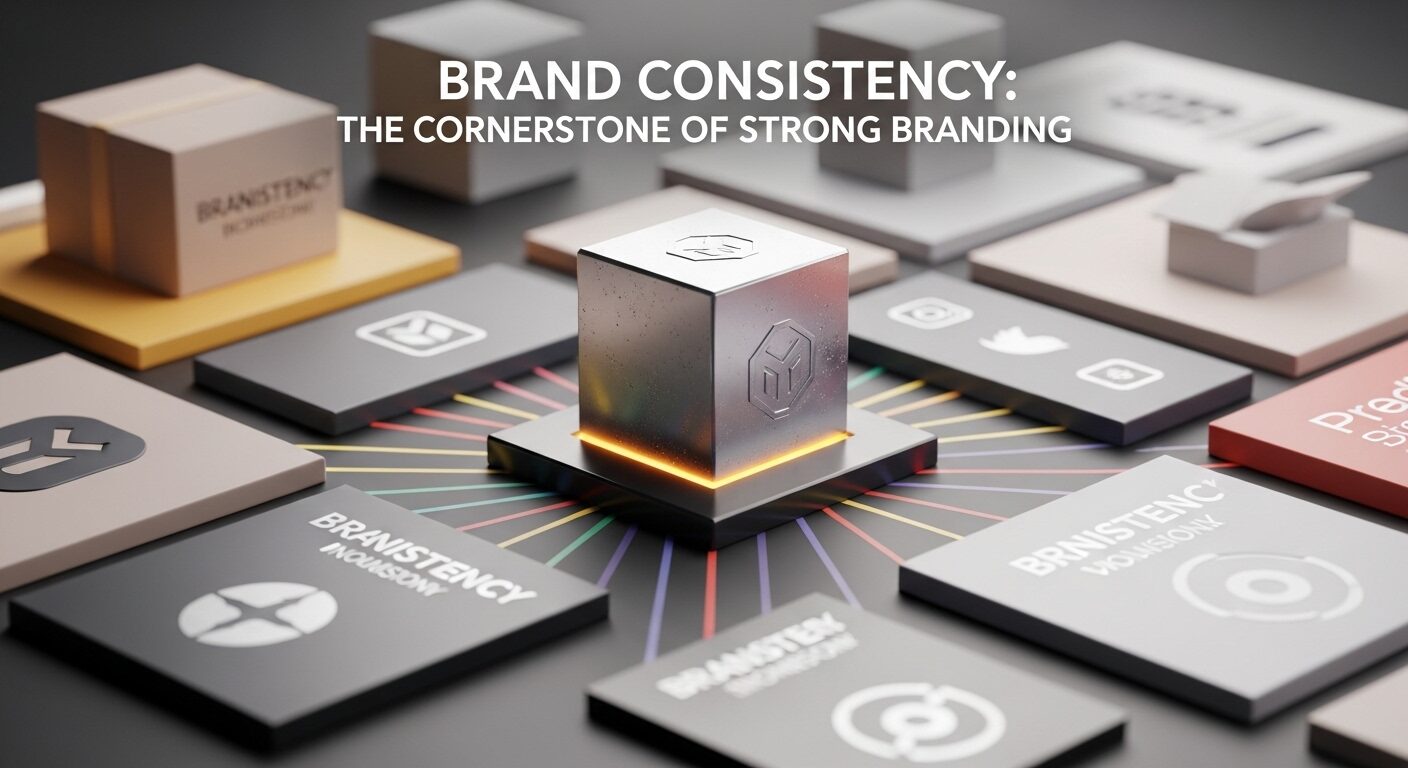Brand Consistency: The Cornerstone of Strong Branding
In today’s competitive marketplace, Brand Consistency is not merely a buzzword; it is a fundamental pillar for any successful enterprise. A consistent brand experience fosters trust, recognition, and ultimately, customer loyalty. Therefore, understanding and implementing strategies for maintaining brand consistency is paramount for long-term growth. This article delves into the significance of brand consistency. It also outlines practical steps to achieve it across all your business touchpoints.
What is Brand Consistency and Why Does it Matter?
Brand consistency is the practice of maintaining a uniform look, feel, and message. This applies across all aspects of a brand’s communication and interaction. This includes everything from visual elements like logos and colors. It also covers the tone of voice in marketing materials and the overall customer experience. However, its importance extends far beyond aesthetics.
Building Trust and Recognition
When a brand consistently presents itself, consumers begin to recognize and remember it effortlessly. This familiarity builds a sense of trust, as customers know what to expect from your brand. Consequently, a strong, consistent identity makes your brand more memorable, distinguishing it from competitors.
Enhancing Customer Loyalty
Customers appreciate reliability. A brand that consistently delivers on its promises and maintains a coherent identity across platforms strengthens its bond with its audience. This reliability cultivates loyalty, encouraging repeat business and positive word-of-mouth referrals. For instance, think of iconic brands that rarely deviate from their core identity.
Driving Business Growth
Ultimately, brand consistency translates into tangible business benefits. Enhanced recognition and loyalty contribute directly to increased market share and revenue. Moreover, a consistent brand reduces marketing costs over time. This is because each interaction reinforces the existing brand image, rather than building a new one. Therefore, it’s a strategic investment.
Key Elements of Maintaining Brand Consistency
Achieving true brand consistency requires attention to several critical components. By focusing on these areas, businesses can ensure a cohesive brand presence.
Visual Identity
Your visual identity includes your logo, color palette, typography, and imagery. These elements must be used uniformly across all mediums, from your website and social media to physical products and packaging. Indeed, visual cues are often the first impression.
Messaging and Tone of Voice
The way your brand communicates is as important as how it looks. Maintain a consistent tone of voice, whether it’s formal, friendly, or authoritative, across all written and spoken communications. This ensures your brand personality shines through clearly.
Customer Experience
Every interaction a customer has with your brand, from website navigation to customer service, should reflect your brand values. A seamless and predictable experience reinforces the brand’s commitment to its audience. Consequently, a positive experience builds stronger connections.
Product/Service Quality
The core of your brand promise lies in the quality of your products or services. Consistently delivering high-quality offerings is paramount to maintaining brand integrity and meeting customer expectations. After all, actions speak louder than words.
Strategies for Achieving Optimal Brand Consistency
Implementing effective strategies is crucial for embedding brand consistency into your organizational culture. These steps will help you ensure alignment.
Develop Brand Guidelines
Comprehensive brand guidelines are indispensable. This document outlines all acceptable uses of your brand elements, including logos, colors, fonts, imagery style, and tone of voice. Share these guidelines with all employees and external partners.
Train Your Team
Every team member, regardless of their role, represents your brand. Provide thorough training on brand guidelines and expectations. Empowering employees to be brand ambassadors ensures consistency at every touchpoint.
Conduct Regular Audits
Periodically review your brand’s presence across all channels. Look for inconsistencies in visuals, messaging, and overall experience. Regular audits help identify and rectify deviations before they cause significant damage. For example, check social media profiles, advertisements, and customer service scripts.
Leverage Technology
Utilize tools for digital asset management (DAM) and content management systems (CMS) to centralize brand assets and ensure only approved materials are used. Furthermore, automation can help maintain consistent messaging across marketing campaigns.
Conclusion
Ultimately, Brand Consistency is a non-negotiable aspect of modern business strategy. It transcends mere aesthetics, acting as a powerful tool for building trust, fostering loyalty, and driving sustainable growth. By meticulously defining your brand, implementing clear guidelines, and ensuring consistent application across all customer touchpoints, your business can cultivate a strong, recognizable, and enduring presence in the market. Embrace consistency to unlock your brand’s full potential.
want to read more about the branding visit this post.
If you Want any Guide Visit our Contact page or contact us on Whatsapp.
Frequently Asked Questions (FAQ)
Q1: Why is Brand Consistency so important for small businesses?
A1: For small businesses, brand consistency helps build credibility and trust quickly. It makes a new brand appear more professional and established, aiding in customer recognition and retention in a crowded market.
Q2: How often should I review my brand for consistency?
A2: Regular brand audits are recommended, ideally quarterly or bi-annually. However, it’s also crucial to review consistency whenever there’s a significant brand update, a new product launch, or a major marketing campaign.
Q3: Can Brand Consistency stifle creativity?
A3: While brand consistency provides a framework, it shouldn’t stifle creativity. Instead, it offers boundaries within which creativity can thrive. It ensures that innovative marketing efforts still align with the core brand identity, making them more effective.



